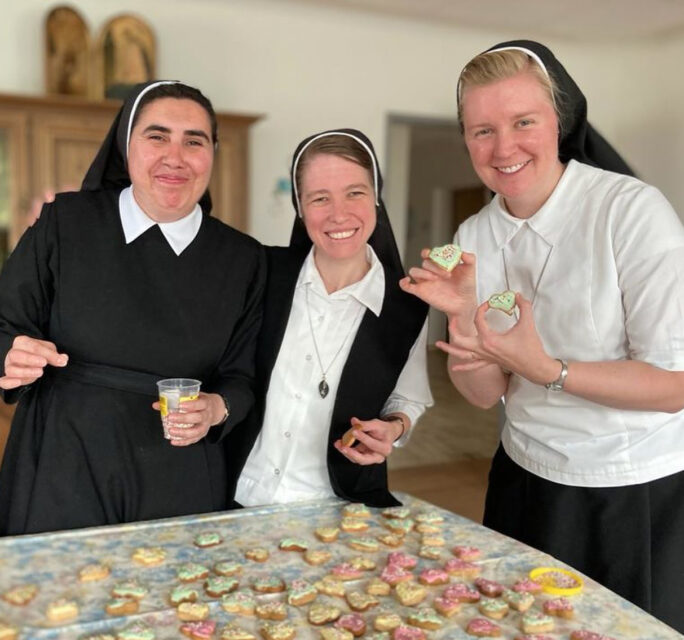(RNS) — In an America where institutional religious practice itself is on the wane, a good Catholic sister — or priest, or brother — is sometimes hard to find.
But not, as it turns out, impossible.
Though the number of men and women drawn to religious orders has dropped dramatically over the past 50 years, a small but steady stream of millennial and Generation Z men and women still choose this strikingly countercultural life, often finding religious life in surprising ways.
Sister Jenny Wilson, who until recently taught theology to high schoolers in Buffalo, New York, said some of her students initially learned about nuns by viewing horror movies.
“I never even knew that was a thing,” said Wilson, 46, who is now a vocation director for the Sisters of Mercy of the Americas, a 200-year-old order of about 6,000 nuns worldwide who are engaged in varied ministries, including health care, education and spiritual direction.
In 1965, there were almost 179,000 Catholic sisters in the U.S. and about 35,000 religious priests and brothers, according to statistics compiled by Georgetown University’s Center for Applied Research in the Apostolate. In 2021, there were approximately 33,000 women and 14,000 men.
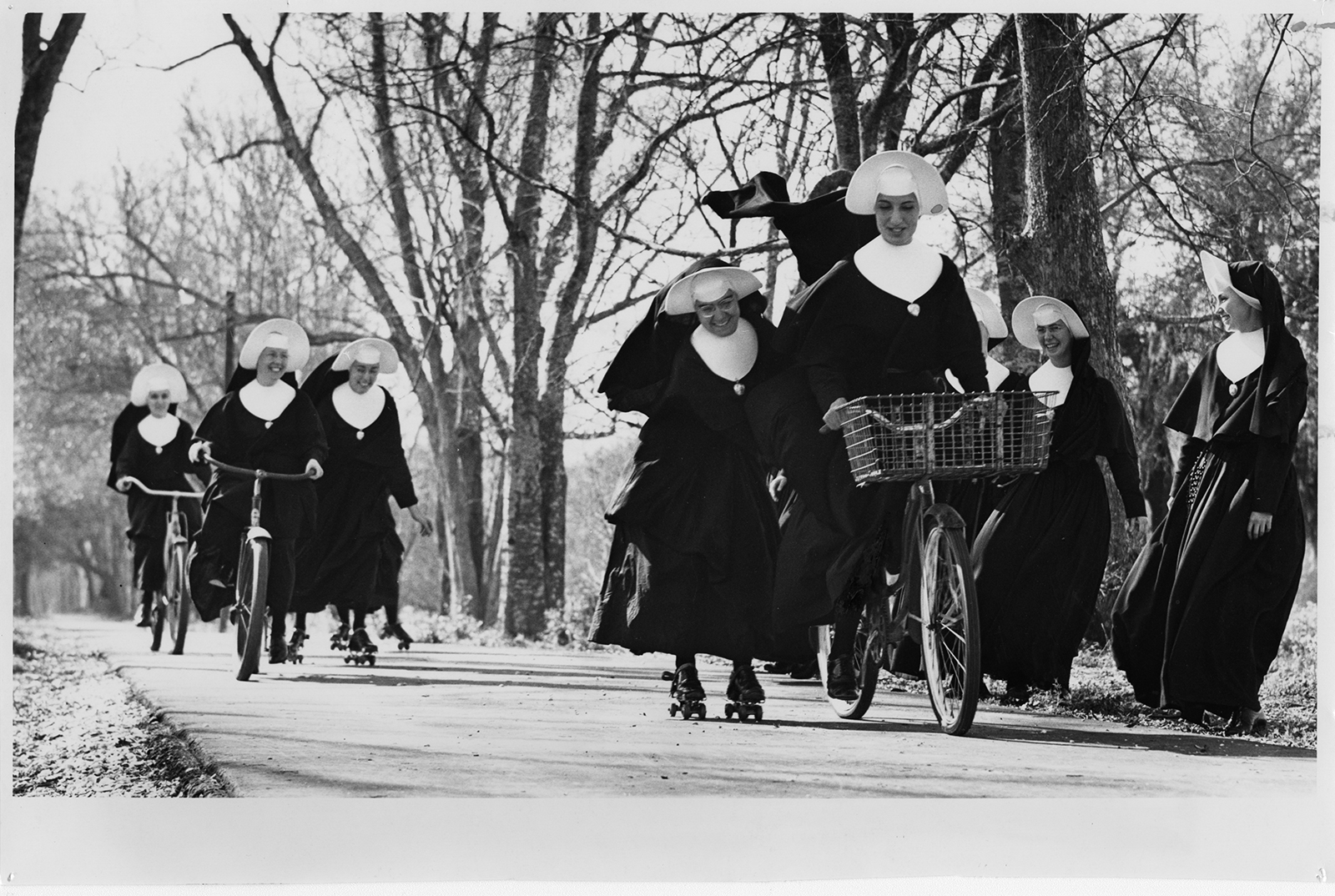
Juniorate members of the Marianites of the Holy Cross turn to bicycling and roller-skating for recreation during a break from spiritual and academic training in New Orleans in 1965. (RNS archive photo by Frank Methe. Photo courtesy of Presbyterian Historical Society)
As those who have given their lives to God become more scarce, their rarity feeds the decline in vocations. So too is a trend that began in the 1970s for some orders to discard their once distinctive habits.
“Sisters just aren’t visible now,” said Sister Maria Angeline Weiss, vocation director for the Sisters of Christian Charity in Mendham, New Jersey. She recalled startling a store checkout clerk with her garb. “I said, ‘Didn’t you ever see “Sister Act”?’ And they just looked at me.”
When young people find their way to Weiss and other vocation directors today, they often need to be acquainted with the concept at a very basic level. Yes, Weiss tells them, we do have beds to sleep in, and three meals a day. Yes, she assures potential members, sisters even have fun together. And yes, you do have to be Catholic.
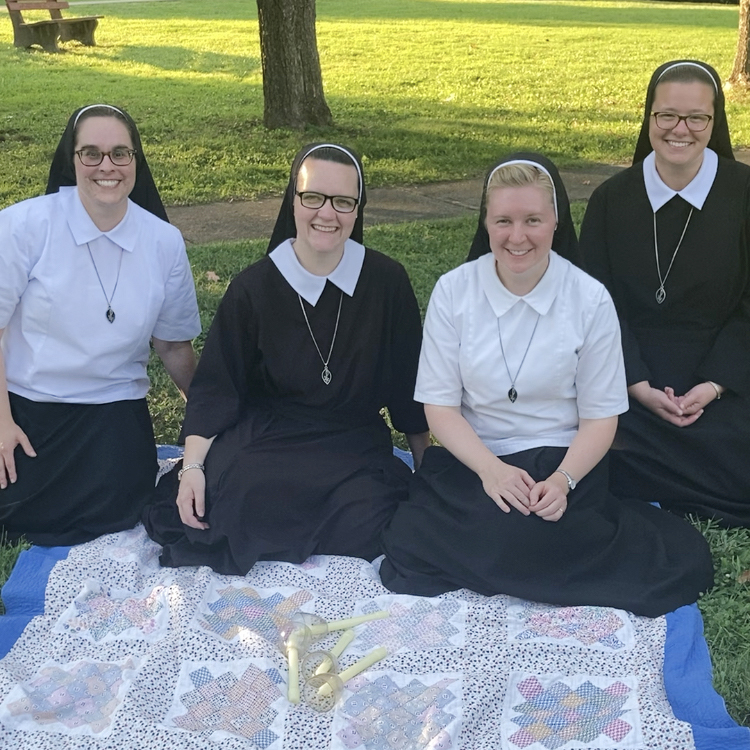
Sister Maria Angeline Weiss, second from right, with fellow Sisters of Christian Charity during a Marian pilgrimage in Pennsylvania. (Submitted photo)
Most Catholic nuns today fall under the aegis of two umbrella organizations, the Leadership Conference of Women Religious and the Council of Major Superiors of Women Religious, the result of a post-Vatican II split. Some communities belong to both. Others, particularly contemplative orders, to neither.
There is only one national organization for men in religious communities, the Conference of Major Superiors of Men.
More than 3,500 new members entered men’s and women’s religious institutes from 2003-2015, according to a 2020 survey by CARA and the National Religious Vocation Conference. Their average age was 28 — interestingly, that’s also the average age of marriage in the U.S. The vast majority had attended a Catholic school and obtained a bachelor’s degree before discerning a call. From there, it was on average more than two years before they took their final vows.
Many reported being drawn by a community’s focus on prayer, spirituality, community life and mission, according to the study.
Community is very high on the list. Almost every woman she encounters as vocation director expresses a desire for group life, said Wilson.
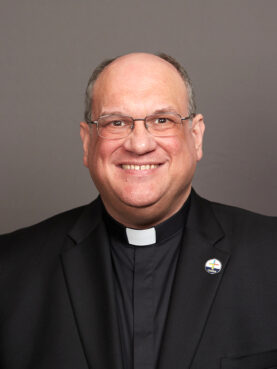
The Rev. Frank Donio. (Photo by Gary Rohman)
In a time when fewer young adults have been raised in churchgoing homes, the work of vocation directors has become more expansive. Part of their job, they say, is helping young women and men embrace what it means to be a faithful Catholic. Only then can they decide whether to move forward with the long process of becoming a member of a religious community.
“We want people to enter our community, for sure,” said Sister Caryn Crook, a vocation director for the Sisters of St. Francis of the Neumann Communities. Her order sponsors a House of Discernment in Pittsburgh, now home base for Crook. “I (also) work with a lot of women who will probably never enter our community. I’m helping them grow in their faith, understanding their gifts and talents, and how God might be leading them to use them for the world.”
The Rev. Frank Donio, a Catholic priest and executive director of the Conference of Major Superiors of Men, in Greenbelt, Maryland, has worked with young people on college campuses since 1997. Deciding to embrace a Catholic identity (not to mention join a religious community) has become more of an individual choice for young people, he said.
“There’s not necessarily a Catholic culture sustaining that. Sometimes they are in conflict with, or simply different from their own families — even if their family would consider themselves Catholic,” said Donio, a member of the Society of the Catholic Apostolate, an order founded in Italy in 1835.
Mary Beth Fraser Connolly, a history professor at Purdue University Northwest who has done extensive research on Sister of Mercy communities in the Midwest, agreed that it’s not the same cultural choice that it once was.
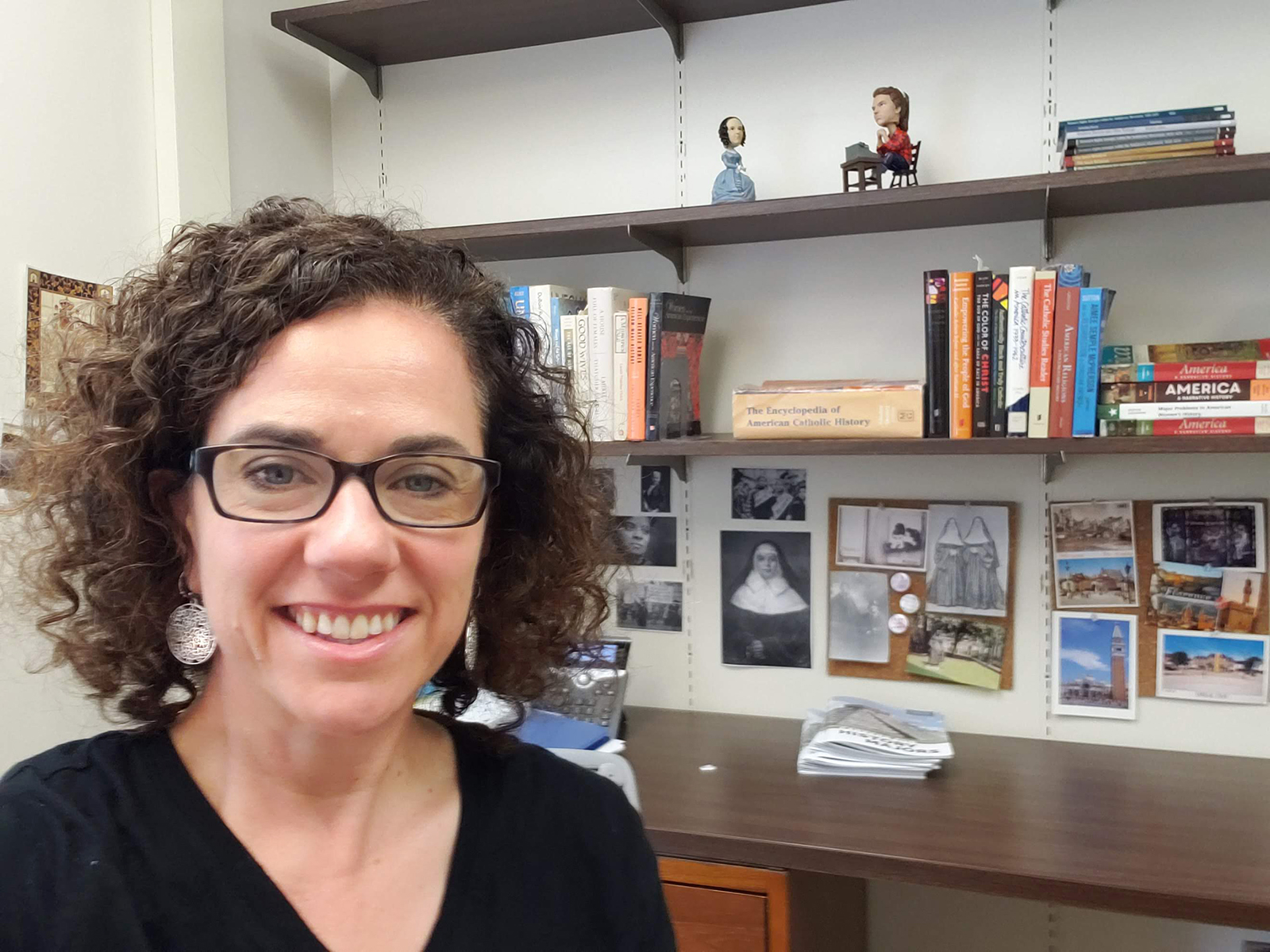
Mary Beth Fraser Connolly. (Submitted photo)
Young adults choosing religious life reflect the diversity of racial, ethnic and cultural backgrounds increasingly characteristic of Catholic life in the United States, Fraser Connolly pointed out. Many are the children of immigrants or are immigrants themselves.
Leny Magana moved from El Salvador to America with her family almost a decade ago. Now 28, she is working on the border helping migrants with the Sisters of the Assumption, while considering a vocation to another religious community. She’s hoping to end up in one that includes women of her own generation.
Some new nuns, such as Sister Madeleine Davis, find their vocation as part of their conversion to Catholicism. Davis, a member of the Sisters of Christian Charity who has taken her first vows, grew up in northern Illinois in an evangelical Protestant family. She was introduced to Catholicism by her brother, himself a convert, she said.
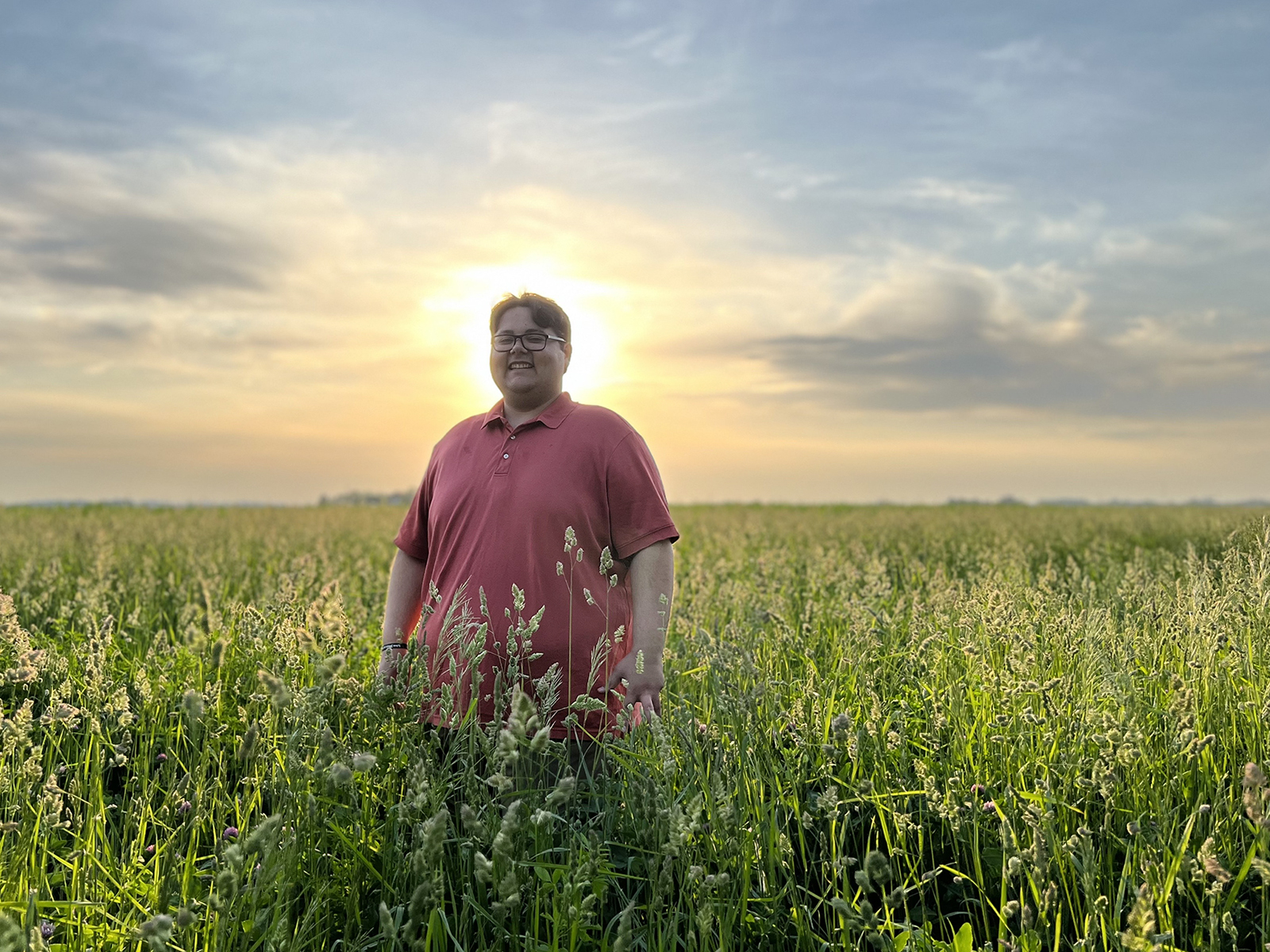
Christian Camacho. (Submitted photo)
Christian Camacho, a 24-year-old who grew up in the Philadelphia area, moved to Memphis, Tennessee, after two years living with Christian Brothers in Minneapolis, where he worked as a learning specialist. “In a way, I was like a brother without the title,” he said of that time.
A first-generation college graduate, Camacho currently serves as a campus ministry aide at Christian Brothers University while discerning a vocation with the community in their Midwestern province.
Though the numbers of religiously unaffiliated young adults continue to grow, some data suggest that the majority still consider themselves religious, though skeptical of organized religion.
Catholic religious institutes have adapted their approach to reach these younger demographics. Where once seekers might have contacted an aunt who was a nun or asked the local priest for advice, they are equally if not more likely today to check out communities online or participate in Zoom discernment groups.
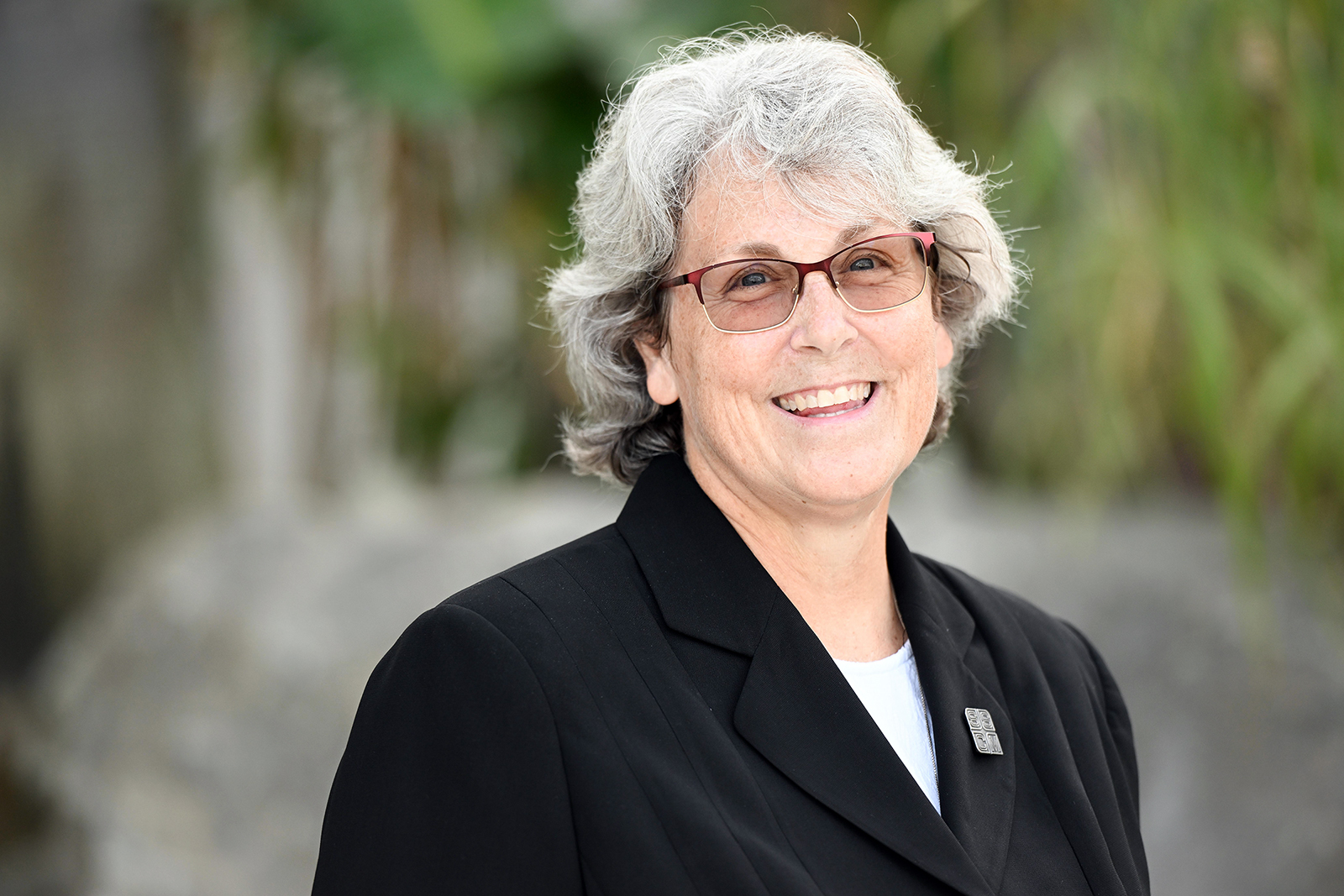
Sister Deborah Borneman. (Submitted photo)
“The message to follow Jesus hasn’t changed,” said Sister Deborah Borneman, director of member relations and services at the National Religious Vocation Conference. “Discernment has changed. It continues to evolve.”
Since 2006, the online ministry A Nun’s Life has used videos, road trips, interviews and digital media to make the life of a sister less mysterious, while encouraging readers and listeners to explore their callings.
“I think people are more comfortable reaching out on social media,” said Sister Réjane Cytacki, executive director of A Nun’s Life and a member of the Sisters of Charity of Leavenworth, Kansas. “I get a lot of listeners who aren’t Catholic, so we have to talk through that.”
To become a sister, you have to become Catholic first, she tells them. Inquirers from other countries are often directed to look either at religious organizations in their own country or the international community. One high school student asked if she could be a sister and an astronaut too.
“The sky’s the limit, go ahead,” she assured her.
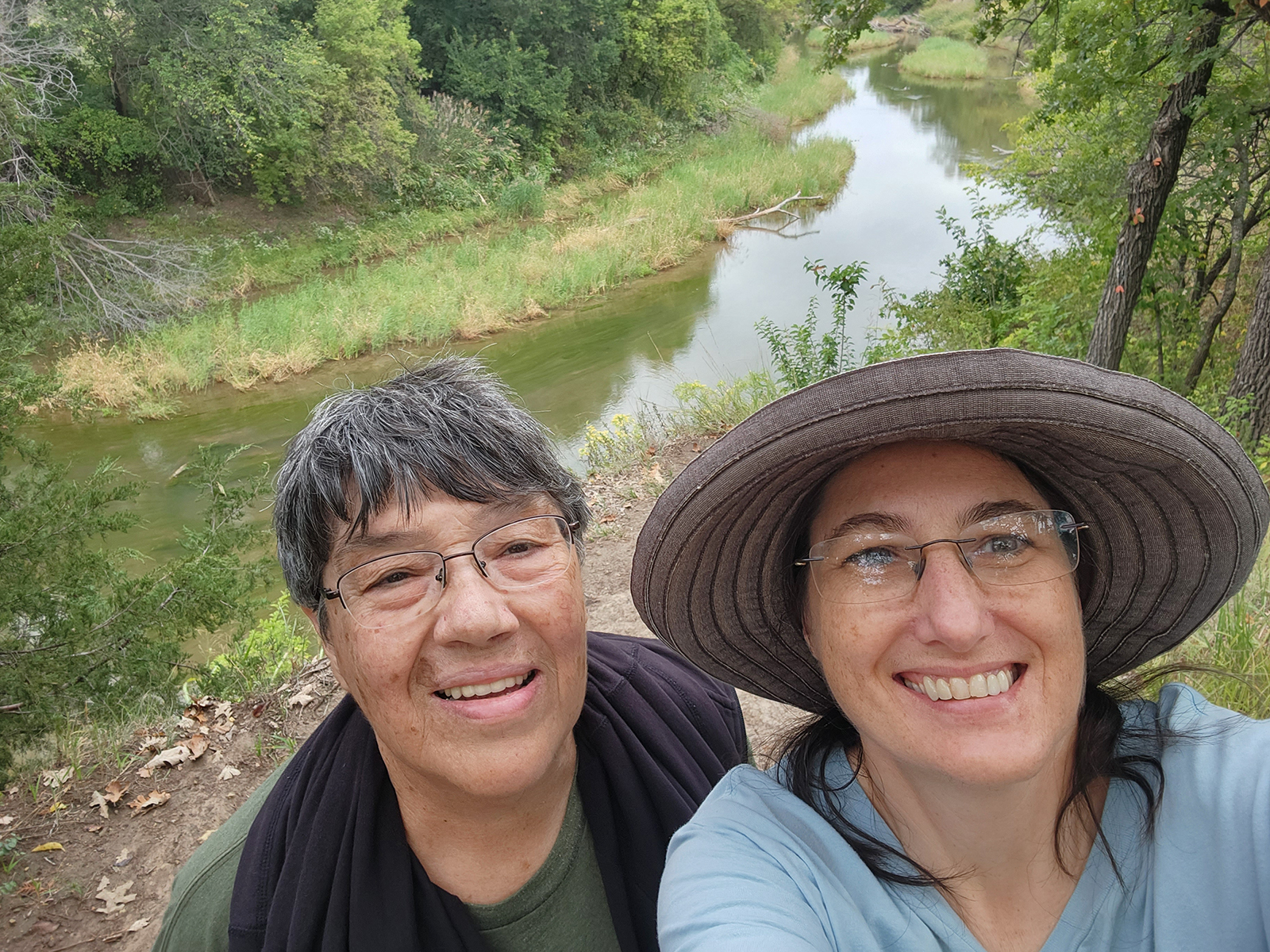
Sister Pat Johanssen, left, and Sister Réjane Cytacki of the Sisters of Charity of Leavenworth, Kansas. (Submitted photo)
